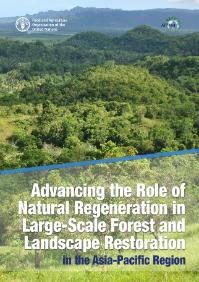Resource information
There are numerous global, regional, national and even subnational targets for increasing forest area and forest restoration. In light of these global targets and emerging ambitious national commitments, it is imperative to develop low-cost strategies and techniques for landscape restoration. The most widely used restoration strategies involving planting of tree seedlings are often costly and their application for restoring vast expanses of degraded forest lands in the region may be limited. Case studies and experiences with natural regeneration from the region have shown that natural regeneration significantly reduces the cost of restoration in areas that meet certain conditions. Native species that are adapted to the prevailing conditions re-establish on their own with some assistance, achieving accelerated growth in accordance with natural succession, leading to the recovery of native ecosystems. Restoration strategies based on natural regeneration also provide low-cost opportunities for conserving biodiversity and enhancing ecosystem services, including carbon sequestration and watershed protection. Despite these economic and environmental advantages, natural regeneration is often overlooked when restoration policies and programmes are designed for a number of reasons. These include lack of its recognition as a viable restoration option; perverse incentives favouring clearing of young secondary growth for plantation development or other land uses; lack of institutional support by government agencies and other organizations; unclear tenure and property rights; lack of incentives for local communities; and uncertainty about the restoration processes and outcomes. This publication aims to share information on the outcome of the regional workshop, entitled ‘Promoting the Role of Natural Regeneration in Large-scale Forest and Landscape Restoration: Challenges and Opportunities, held in Nanning, Guangxi Province, China, from 19 to 21 June 2017, which was organized to better understand the challenges and opportunities for natural forest regeneration and to promote its inclusion as a major component of large-scale restoration initiatives.


